Gifts of the Elderberry Tree!
 The Elderberry Tree we focused on today sits just outside the Educare space, behind a fence. But this didn’t stop the children from spying the tiny Elderberry flowers with their little eyes!
The Elderberry Tree we focused on today sits just outside the Educare space, behind a fence. But this didn’t stop the children from spying the tiny Elderberry flowers with their little eyes!
Teacher Allegra shared that the word “Elder” refers to a relative that is older and, perhaps, wiser than we are. The Elderberry earns this name because its berries and flowers are used for various health benefits (teas, creams, etc.) Allegra shared a story about her grandmother and the children were given the opportunity to speak about their Elders, and about favorite foods that this special elder made for them.
The gratitude today was a type of Elderberry tea that many children tasted and gave a thumbs up to! Some asked for more! We also shared golden raisins because the scrubjay likes Elderberries and other fruits grapes!
As if by magic, we captured a photo of a hummingbird in the garden this morning! Can you spy him in the photos below? We noticed that bees and hummingbirds like purple flowers, and there were many blossoming in the garden today for them to visit and sip or gather pollen from.




Allegra also shared Indigenous flute music and shared that the flutes are made of Elderberry branches that are hollowed out. The children took a cross-legged yoga position, closed their eyes and listened. They heard the flutes, other children playing, birds…and they smelled the earthy smell of the garden soil. They pretended they were Elderberry trees with branches, roots, and flowers.
Some of the children dug in the soil at various places in the garden, comparing the soil. Is it wet? Dry? Dark? Light? Does it stick together? Does it fall apart? Do we see the composting bits of plants in it? We spied earthworms and other living creatures happily living in the soil, decomposers! (we’d shared a lesson on decomposers in a previous week). We touched the soil so our bodies could absorb the beneficial microbes in the soil.
One class arrived and asked if we could talk about composting because they are composting in class. Allegra pointed out brown and green materials in the garden and the children gathered both for the composting bin. CNGF is thrilled when teachers ask us to extend classroom learning!
Another class said that they are studying ice cream, and so we looked at the mint herb that can be used to flavor ice cream.
Each week we delve a little deeper into all of the sensory experiences the garden makes possible…sights, sounds, smells, tastes, and touches. Today we saw and heard the bees and talked about how they gather pollen and take it to another plant so more plants can grow. We smelled the soil and tasted Elderberry cordial with Calendula petals.
Alrie harvested greens (collard, chive, etc) from the Educare and Hester Gardens to share with each teacher!
Below are photos of our explorations. If you look closely, you can see children connecting with other children, adults connecting with other adults, and everyone connecting with the sights/sounds/smells/tastes/textures of their natural world. The garden makes all of this connection, all of this belonging, possible!



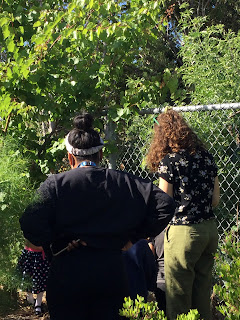
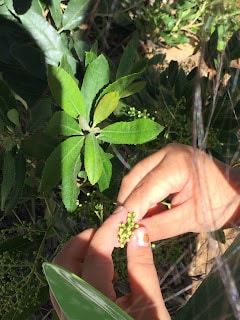





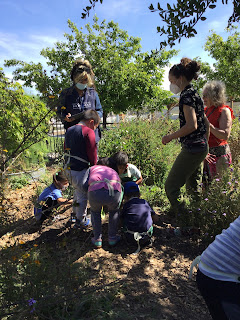



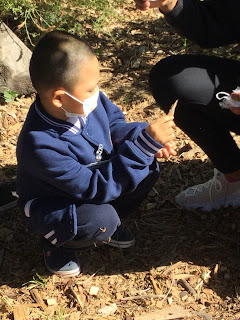

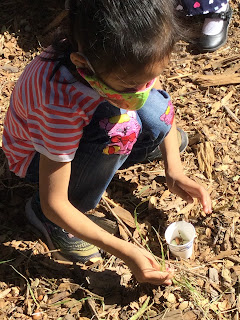


























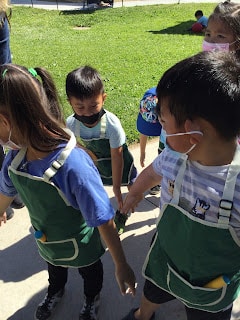











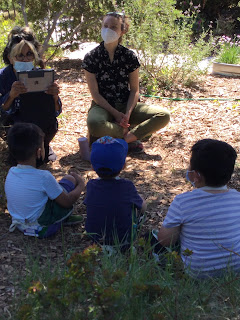



Many urban children will not visit wilderness lands for many years. Our garden is their link to understanding their link to nature, and is fundamental to developing a sense of responsibility to their environment. In 1965, Supreme Court Justice William O. Douglas proposed that the United States adopt a Wilderness Bill of Rights. It reminds us all of why our time together learning in the garden is so important for children’s development. Here are elements of his Wilderness Bill of Rights:
“We believe in the right of children to an understanding of their place in nature’s community, of which they are a part.
We believe in their right of discovery and adventure in nature’s world.
We believe in their right to friendly comradeship with someone older, likewise an adventurer in the out-of-doors.
We believe in their need of the healing found in the wilderness of nature.
We believe in their unfolding response to the warm earth, the friendly stars, the music of streams, the unknown life in the hidden places, great trees, sunsets, and storms.”

